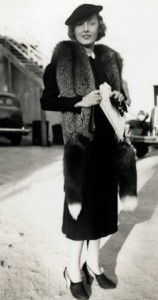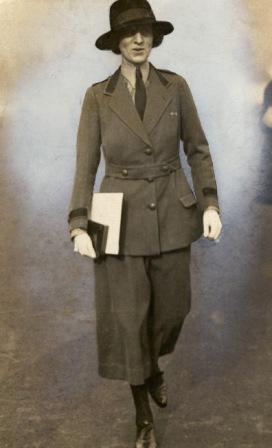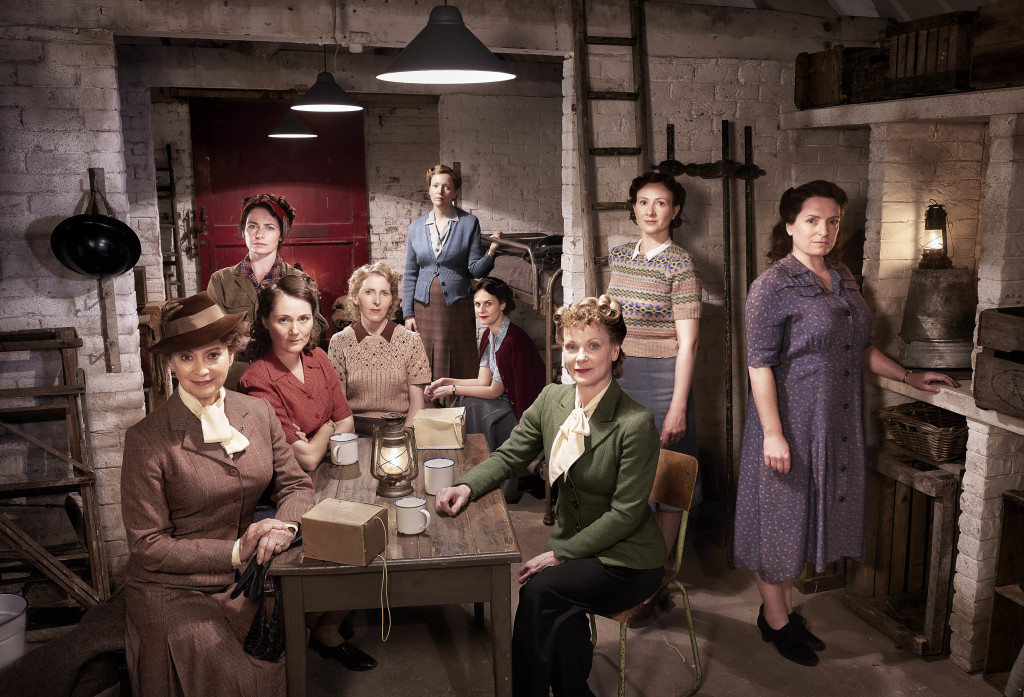
© ITV
When I am asked what it is about the Second World War that fascinates me so much I reply that it is not war but people who excite my interest: how individuals cope in a time of emergency and how such events impact upon their later lives. One of the practical aspects that had to be considered was clothing and it is something I am regularly asked about in regard to Home Fires. Just to be clear, I am not involved in the production of the drama – my involvement stops with the scripts – but I did have the great good fortune to talk to the series costume designer, Lucinda Wright, in the lead up to filming series 1 and she took me round the fabulous collections of clothes at Angels Costumes in London. Their website claims they have over one million items and eight miles of hanging costume. Well, I didn’t see them all but Lucinda and I did discuss colour and fabrics in some detail.
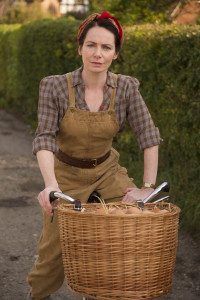
© ITV
Everyone in Home Fires is dressed to their status. Steph Farrow wears dungarees in the fields but once she arrives at a WI meeting she is scrubbed clean and wearing a patterned dress, as would have been the case in the 1940s. Edith Jones, the wonderful diarist whose jottings form the golden thread through my book Home Fires, would always change into a frock in the evening for supper, even if it was just her and Jack eating dinner together. She is similar to Steph in many ways. At the other end of the spectrum is Joyce Cameron. Always meticulously turned out and often wearing fur. Until the 1970s when there was a huge animal rights’ movement against fur coats, women of a certain standing would have one, two or even three fur coats in their wardrobe: a mink for the evening, a pine-marten for day use and a fox stole to wear over a tweed coat.
One major change in Britain during 1940 was the proportion of people wearing uniform. You might not have noticed the change between series 1 and series 2 but it is striking and absolutely reflects what was happening in the country. About a third of the population of Britain were entitled to wear uniform during the Second World War. This would give a figure of somewhere in the region of 15 million people, a large number of whom were women. So we have in Great Paxford a mixture of RAF, Army and women’s service uniforms – that much is obvious. But then there are the women working in the Barden’s factory who all wear pinafores over their own clothes to protect them. Clare wears a uniform when she is working for Frances Barden as a maid, though not on her days off with Spencer. House coats, such as those worn by Pat, were popular and a sensible way to keep the wear and tear of ordinary clothes to a minimum.
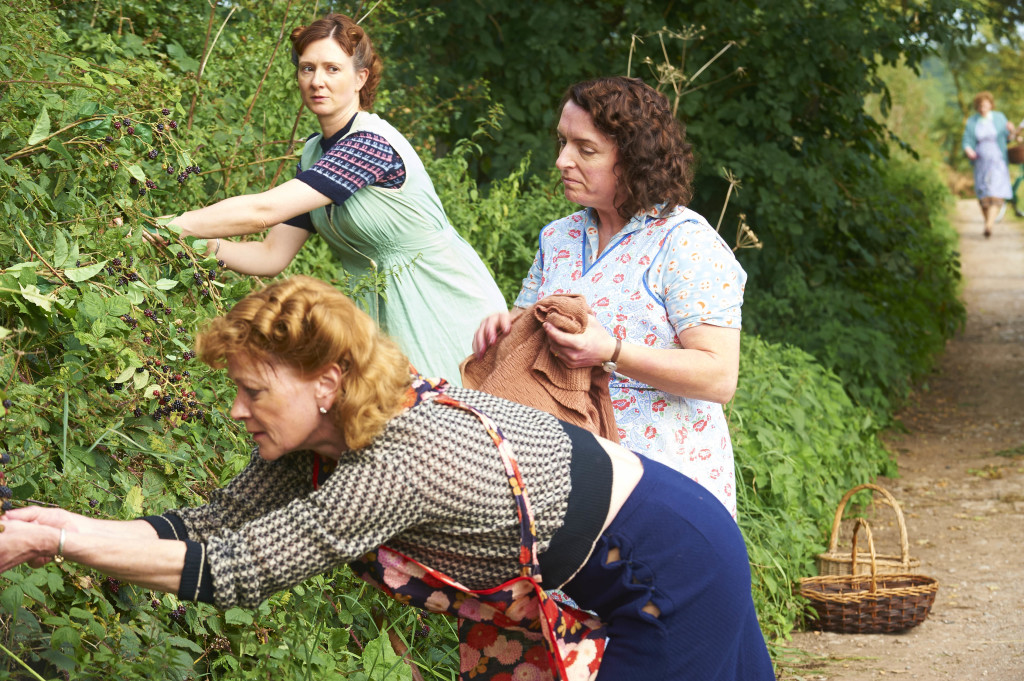
With so many people wearing them, it is unsurprising that the general public knew how to ‘read’ uniforms across a street or at the scene of an incident, and could identify at a glance a man or woman’s job, rank and status. And it was very important to know and trust the person who was issuing an instruction, especially during the Blitz, when people needed to know who to listen to or appeal to in a crisis. Aside from emergencies, uniforms had a hierarchy with implications on many levels, some of them more personal than official.
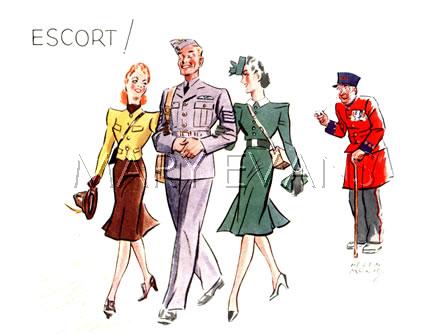
1941
Some uniforms, such as the Royal Air Force blue, gave men real status in women’s eyes. This was partly because it comprised a smaller body of men than the army, and their jobs, especially the pilots, were considered heroic and extremely dangerous. They were known as ‘Our Glamour Boys’. The PBI (Poor Bloody Infantry) suffered in their khaki uniforms from being the least admired of the three services by the general public. Members of the women’s services (just over 100,000 in June 1941) were said to grade potential boyfriends in an order of eligibility in which ‘RAF officers rated tops, being classified in turn by rank and number of decorations; naval officers came second and brown jobs a long way behind’.
So as you are watching Episode 5 of Home Fires, it is worth looking out for the distinctions of dress and the way different people react to it. That is, if you have time to notice that level of detail when there is so much drama going on around you. This is another breathtaking hour where I lurched from near tears of enchantment to gasps of horror. Enjoy Sunday evening!
